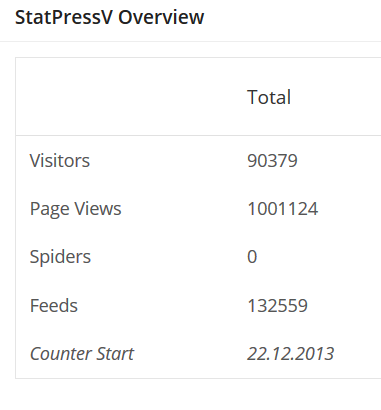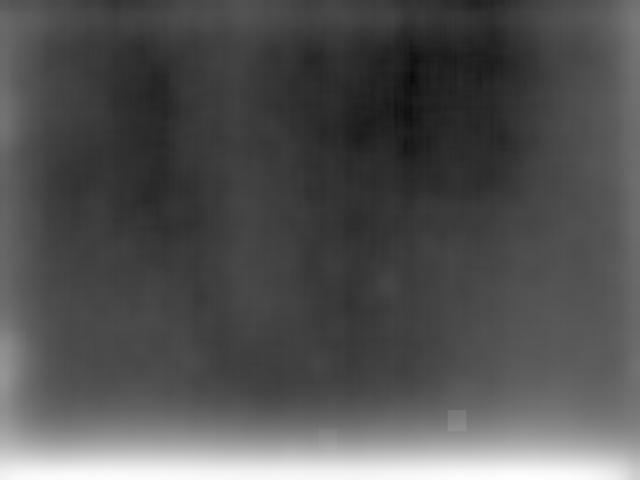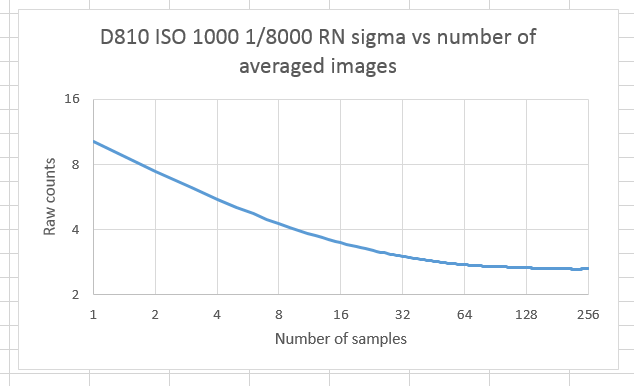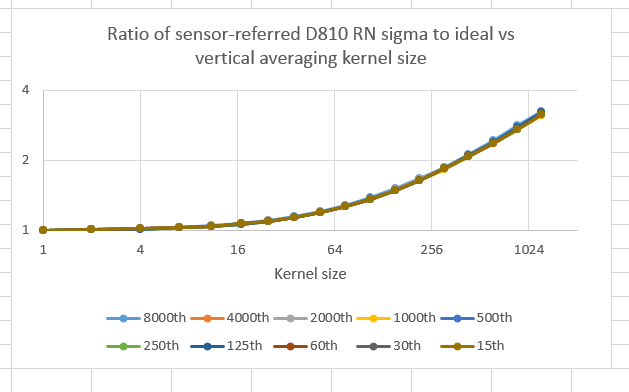A couple of posts ago I reported getting rid of almost all the Nikon 810 low-frequency dark-field noise by averaging many (256) dark-field images and subtracting the average from individual images. I wondered if the same trick would work with the Sony alpha 7S. Sadly, the answer is no. Here’s the standard deviation of the… [Read More]
A million pageviews
Thanks, everybody. I’ll even thank the ‘bots. Jim
D810 dark-field pattern error images
In the preceding post, I presented data about the D810 fixed pattern read errors and the results of using averaged dark-field images to correct the fixed part of the read errors. We found that almost all of the low-frequency componts of the read errors were fixed — they didn’t change from exposure to exposure. Now… [Read More]
Pattern error in D810 dark-field images
I’ve been analyzing the low-frequency behavior of read noise in several cameras for the last two weeks. Now I turn my attention to how much of the dark-field images vary from exposure to exposure, and how much form a fixed pattern. In addition, I will explore the differences in the spatial spectra of the fixed… [Read More]
D810 read noise characteristics vs shutter speed
There’s an assumption buried in the protocol for the experiment that led to yesterday’s post: that the read noise of the D810 doesn’t change character over the range of shutter speeds employed in the testing, which were from 1/60 (used to get the histogram that let us estimate the electron counts), and 1/8000 (the highest… [Read More]
- « Previous Page
- 1
- …
- 385
- 386
- 387
- 388
- 389
- …
- 577
- Next Page »




